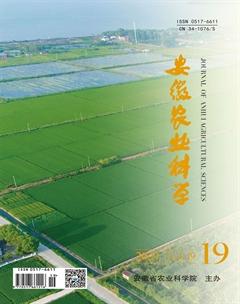失地農民再就業問題研究——以荊州市華中農高區為例
趙宇 夏慶利
摘要 隨著我國經濟的高速發展,城鎮化的進程正在不斷加快,農村土地征收的規模不斷擴張,失地農民數量不斷增加,而失地農民再就業問題作為城鎮化發展中的熱點問題,關系著城鎮化發展的質量和全面建成小康社會的進程。鑒于此,以荊州市華中農高區為例,首先分析了失地農民的就業狀況,進而系統分析了華中農高區失地農民就業的影響因素,并從政府、社會和失地農民三方面出發有針對性地提出了解決失地農民就業難題的治理策略,以期對解決失地農民就業問題提供啟示。
關鍵詞 失地農民;就業;華中農高區
中圖分類號 F 323.6? 文獻標識碼 A? 文章編號 0517-6611(2021)19-0239-03
doi:10.3969/j.issn.0517-6611.2021.19.062
開放科學(資源服務)標識碼(OSID):
Research on the Reemployment of Land-lost Farmers—Taking Huazhong Agricultural High District in Jingzhou City as an Example
ZHAO Yu1, XIA Qing-li2
(1. Hubei Rural Development Research Center, Yangtze University, Jingzhou, Hubei 434023; 2. Huanggang Normal University, Huanggang, Hubei 438000)
Abstract With the rapid development of China economy, the process of urbanization is accelerating, the scale of rural land acquisition continues to expand, and the number of land-lost farmers continues to increase. The reemployment of land-lost farmers is a hot issue in the development of urbanization, which concerns the quality of urbanization development and the process of building a moderately properous society in all aspects. In view of this, this article takes the Huazhong Agricultural High District of Jingzhou City as an example. First, it analyzes the employment status of land-lost farmers, and then systematically analyzes the factors affecting the employment of land-lost farmers in the Central China Agricultural High Area. Targeted management strategies to solve the employment problems of land-lost farmers are put forward in order to provide enlightenment for solving the employment problems of land-losing farmers.
Key words Land-lost farmers;Reemployment;Huazhong Agricultural High Zone
作者簡介 趙宇(1997—),女,湖北枝江人,碩士研究生,研究方向:農業經濟理論與政策。*通信作者,教授,博士,碩士生導師,從事農村發展研究。
收稿日期 2021-01-25
黨的十九大報告明確指出“就業就是最大的民生。提高國民的就業質量和人民收入水平、拓寬居民增收渠道、促進農民工多渠道就業創業等”[1]。2019年的政府工作報告指出要實行就業先行,這也是首次將就業先行作為國家的宏觀政策,在建設以人為本的新型城鎮化的大背景下,突出強調一定要保障農村轉移勞動力就業。現如今我國經濟的飛速發展,城鎮化率大幅提升,失地農民數量隨之增加,失去土地的農民也就失去了基本生活保障[2]。加之失地農民科技文化素質不高,政府的補償安置制度不完善、執行力度不強,導致農民不能及時就業或無法就業,嚴重阻礙了城鎮化的發展和全面建成小康社會的進程。鑒于此,筆者以華中農高區為例,結合我國現有的政策體系,分析了影響失地農民再就業的因素,并提出了相應的治理對策,希望緩解失地農民就業難的現象,有利于當地城鄉一體化的發展,同時對其他具有類似現象的地區提供參考具有重要的現實意義。
1 華中農高區失地農民就業狀況
1.1 失地農民呈現出老齡化趨勢,且以男性居多
從華中農高區失地農民的年齡結構來看,呈現出老齡化趨勢,具體情況如下:大于60歲的農民占樣本總量的33%,50~59歲的農民占38%,20~29歲農民占4%,30~39歲農民占8%,40~49歲農民占18%。越來越多的農村青壯年勞動力不愿留在農村,大多數選擇在沿海城市和經濟發達的地區就業,留下來的都是中老年人從事農業生產。
從性別結構來看,男性占樣本總量的 62.9%。女性占樣本總量的37.1%。從結果來看,華中農高區失地農民中男性占絕大多數,這也與中國傳統農業發展的特征相一致,男性在農業生產中占主導地位,土地被征收之后,失地農民以男性居多。由于經濟的發展,以男性為主的農村勞動力開始向經濟發達的地區轉移,越來越多的農村女性成為了農業生產的主體,因此失地農民中女性所占的比例也有所提高。

